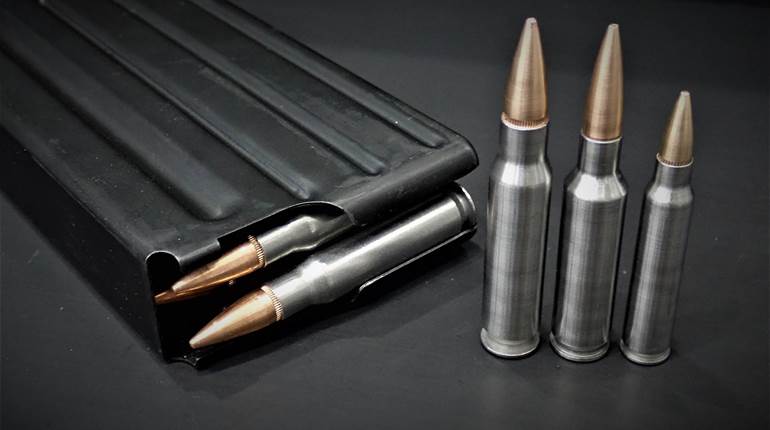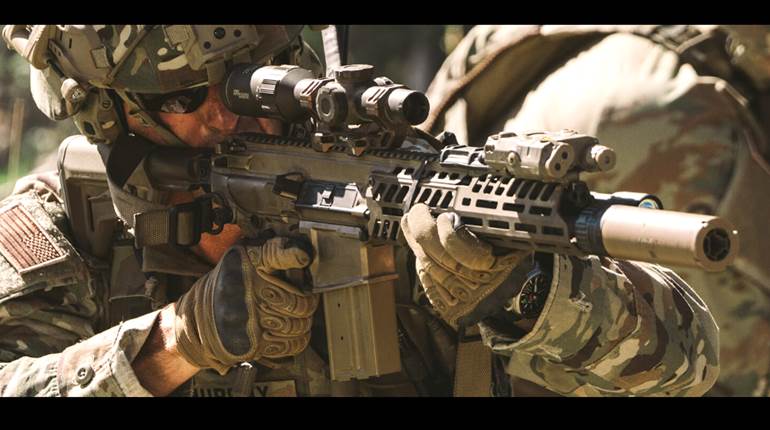
Greg Stube doesn’t remember what he said when, in the throes of battle—he just asked someone, anyone, on his A-Team of Green Berets to take out the Taliban fighter shooting at him from behind. But he knows that what happened next changed him forever. Later, after being grievously wounded, and as he struggled to stay conscious, and therefore alive, he does remember what he said and why it matters to him to this day. Finally, in the effort to get up from what was almost his deathbed, he learned something even more profound from a few decisive conversations.
Now, looking back, he says the fact that these pivotal scenes in his life all had something to do with the hard reality of gun steel doesn’t surprise him, as he has long lived the warrior’s way. And, anyway, reality, when faced honestly, has a way of shaping us for the better. After all, what is more real than the tool of freedom?
Still, what delights and surprises him most is how deeply he misunderstood himself and even the nature of reality until he had these dramatic moments and faced the decisions they demanded of him.
All of this irrevocably led to his book Conquer Anything—A Green Beret’s Guide to Building Your A-Team. Though he never intended or even expected to write a book, along the way he found that as he lived his story he was, nevertheless, writing it—or it was writing him—scene by scene.
Here are those four life-redirecting conversations.
1. Shots Fired From Behind
A bullet smashed into Stube’s side of the steel chicken plate in the turret on the top of the Humvee and ricocheted away. Stube ducked deeper into the Humvee’s gun turret and glanced back across red ground to an adobe wall 50 meters away. Someone was back there, someone who was trying to kill him with an AK-47.
He couldn’t turn the whole gun turret around to face the Taliban fighter, as bullets were banging into the front of the steel plate in twos and threes. All he could do was rely on his team to take care of the fighter.
The column of 20 vehicles—a dozen Humvees and eight light trucks used by Afghanistan National Army (ANA) soldiers—were filled with 29 other Green Berets and about 50 ANA soldiers. They had run into an ambush. Machineguns were pounding at them and brass was falling hot onto the red earth as they returned fire over the red earth south of Kandahar.
In those tense seconds Stube could feel his back itching, as if he was feeling for the bullet coming for his life. He was wielding death and waiting for death, but he wasn’t waiting complacently.
“I don’t recall what I said into my whisper mic (a headset connected to the team of Green Berets around him),” says Stube, “but I like to think what I said was controlled, calm. I’d been in the Army 18 years by then, 14 of them with the Green Berets. So dammit, I was no cherry, but in the frantic blur of this desperate moment amid days and nights of gunfights in those rough hills far from base, I don’t recall precisely what I said or how I said it.”
"At such desperate times the only ones who can save us are those who have guns and know how to use them.”
Stube does remember looking behind him and seeing branch clippings falling as that Taliban fighter fired bursts through brush from his AK-47 from the top of an adobe wall.
“For that crazy moment I felt alone, naked,” says Stube. “Still, I kept firing bursts of .50-caliber ammo into Taliban positions in front, in red rocks and to the sides along adobe walls in late-afternoon desert light. As I did, I contemplated the feelings of mortality for fleeting moments, as I had several times before. What even a Special Forces’ guy wants in moments of true fear can be the same as anyone else. At times like this what we want is our mommy or warmth and safety of any kind. But they aren’t there, so you are left with a feeling of mental solitude—as if you are hunkered down within yourself and searching fast for solutions.” 
After that moment ran through him like a cold shiver, Stube felt the team more acutely alive around him than ever before when SFC Sean Mishra, who was then tasked with driving the Humvee Stube was shooting from, screamed, “Grenade!”
Sean leapt out of the vehicle to get the nearby Taliban fighter. Sean was a quiet, big, strong and tall hombre. He was one of those guys who are always calm in a storm. He took on a “Big John” persona, like the Jimmy Dean song about a giant of a man who performed heroically to save others. He just couldn’t sit there behind the wheel waiting for Stube to get it in the back.
This was the fourth day of their mission moving deep into the belly of Taliban country south and west of Kandahar to cut off escape routes of Taliban fighters as Canadian and ANA soldiers moved in from the north. They’d upset a hornet’s nest of Taliban fighters as they closed in on what is thought to be the very place where the Taliban was born.
Sean had screamed “grenade” after he’d leapt out of the vehicle and tried to throw one. His intention was to throw it over the adobe wall that the bad guy was using to try to shoot me and whomever else he could. Sean had done quite a bit of active duty by then, but like many soldiers he had obviously never rehearsed throwing a grenade when wearing full-body armor. As his arm came forward it ran into his chest plate, causing his arm to stop and the grenade to fall within 20 feet of the Humvee. He kicked sand to get to the other side of our vehicle where he was exposed to even more enemy fire and hit the ground.
Stube dropped down into the vehicle. Moments later, the grenade exploded rocking the Humvee. Stube stood up again into the gun turret and saw shrapnel marks near the bullet dings on his side of the chicken plate.
Sean was apologizing, asking if he was okay. Stube could hear his voice on the headset in his helmet. When Stube said, “Yes,” Sean said he was about to throw another grenade. Stube watched the grenade take a beautiful arc toward the adobe wall but then bounce off the top of the wall and come rolling back their way. They had to take cover all over again and the grenade boomed. Meanwhile, machinegun fire and RPGs were still coming from three directions, and the enemy behind Stube was still alive and shooting.
Other Green Berets around them had heard their conversation over the whisper mics. SSG Zack Harrison, a former school teacher and coach who 9/11 turned into a real-life Chuck Norris, saw what was happening, turned, and leveled an MK-19 grenade launcher (also known as the Mark 19) at that section of adobe wall and sprayed the wall and the area beyond it with grenades. The Taliban fighter was blown into bone fragments.
“This undoubtedly saved my life,” says Stube, “and was a lesson into how critical teamwork is. At such desperate times the only ones who can save us are those who have guns and know how to use them.”

2. The Man He Judged Too Harshly
While serving as cadre at the John F. Kennedy Special Warfare Center and School, Stube had a student named Riley Stephens, whom he didn’t like. 
“Personally and professionally, I saw nothing of value in him. I simply judged him harshly and felt very negative about him,” says Stube. “To my great relief, Staff Sergeant Stephens failed to meet the standards in training. My recommendation was NTR, or Never to Return. I felt so strong in my dislike for him that I couldn’t picture how he had made it as far in training as he did. I even felt as though my own Green Beret would have less value if he got one. He was stealing my oxygen and the sound of his voice grated on my nerves.”
Riley Stephens was gone! Stube was glad.
Stephens, however, did well after that and so received strong recommendations to make it back into Special Forces’ candidacy. It wouldn’t have been Stube’s place to raise an objection to this as he had left his instructor position to rejoin a combat unit by that time.
This Stephens guy went all the way back through all that tough training again. This time he passed. Stube found out because Stephens was on the A-Team Stube later joined for the mission mentioned in the previous section.
A few days after that first intense firefight, Stube was horribly wounded when his Humvee was blown up by an improvised explosive device. Stube was badly burned, and subsequently was shot several times and had a piece of shrapnel the size of a cake plate nearly gut him.
As Stube lay in a ditch during an intense battle he heard a Green Beret say, “Here he is, Stube!” He turned his head and saw that the medic running up with that big aid bag was Riley Stephens.
“My pain was horrible, like nothing I’d ever imagined,” says Stube. “The traumatic damage and burns were unbearable. Yet, when I saw Riley, these words came quickly: ‘No hard feelings, right, Stephens?’”
Stephens eyes were wide open with concern and professionalism as he performed a rapid trauma assessment.
“It was clear he wanted so badly to save my life. It was also clear that he wanted to prove to me that he could do this now—when it counted,” says Stube.
“It was clear he wanted so badly to save my life. It was also clear that he wanted to prove to me that he could do this now—when it counted,” says Stube.
Riley hit all the marks of a flawless trauma clinic, stopping hard-to-reach hemorrhaging in multiple places, dressing burns, and so much more. “He had become a better medic than me,” says Stube, “and for the first time, I could feel pride in it.”
“Still,” Stube says, “as an SF medic, I was very concerned with everything being done, and how. We talked and I gave him what I advice I could.”
Later, when his teammates carried him on a litter toward a medevac Blackhawk, Stube tried to get Stephens’ attention. Immediately, Riley screamed out to the crew with a true sense of urgency. “Put him down easy. Now!” As the litter touched the ground there was a whole team of heads looking down at Stube.
Stube used all the strength he had to speak: “Riley, when I get…back…to Kandahar…I’m …telling everyone…you…touched…my...penis!”
Stube saw Riley back at Fort Bragg a few months later, when he got a pass from the hospital to go home for a few days.
“When he stood before me, all I could do was cry,” says Stube. “I was overwhelmed with gratitude and guilt. So grateful for how he worked to save my life, and so guilty for the way I had judged him and cast him away. Riley hated to see me broken like that, and he quickly wrote his name and number on a Post-it note to hand to me. He put his hand on my shoulder firmly and walked away. He was saving me from the embarrassment of crying, and it also seemed that he had a hard time dealing with it.”
Stube put the note on his computer monitor at home and made firm plans to be in touch with him. “A couple years later, I had not called him. I did not send a Christmas card. I had not taken my son to be around Riley Stephens. While I had been focused on myself, my recovery, and my new life after the military, Riley had been back in combat multiple times. I was still thinking of myself when the call came in that Riley had been killed in Afghanistan. The medic on scene could not save him. My considerations for building and maintaining a team changed in that moment. How could I have been and so stayed, so selfish? Never have I learned more from one man.”
3. Stay Awake, Please Stay Conscious
They flew Stube from Kandahar to Germany even though they didn’t expect him to live long enough to get there. Somehow he was still alive when they landed, but they saw what Stube really needed was a burn center in the United States. They needed a doctor to fly with him but they didn’t have one. By chance, Dr. Dave Barillo, a doctor at the Brooke Army Medical Center in San Antonio, was in Germany to teach a course on caring for burn victims. Dr. Barillo volunteered to fly with Stube to keep him alive. 
As they flew, Dr. Barillo kept Stube conscious by talking to him about anything in common he could think of. Soon they found a common thread, guns.
“We talked about guns and shooting recreationally and anything he could use to keep me awake when necessary,” says Stube. “Firearms and shooting are such a real thing that it kept my mind in the present and off of my pain and my failing body.”
It is easy to play this fact down, says Stube, but the thing is guns are a connection that went through my professional and personal life. “Shooting is how my father and I connected. Learning to shoot in the Army matured me and bonded me to my team,” says Stube. “Guns are passed down in the United States through generations. They are real and force us to be mature and accountable. They can save our lives and, when used responsibly as so many Americans do, can bring lives together. I found talking about them could also save me.”
4. Coming Back from Death
During the year Stube spent healing in a burn unit in San Antonio, he would escape the smell and oversight from the always-vigilant nurses whenever he could. “If they knew what I was doing—a lot of hunting, for example—they’d never have let me out,” says Stube.


But, as he healed, other battles had to be fought. “Now, realize that at the time I’d become addicted to pain meds,” says Stube. “We all do in that situation. It is human. Knowing this was happening elevated my awareness of my own pain and weakness. I wanted to fight this physical need, this weakness, but it’s not easy to fight when you are flat on your back and still healing.”
He was still on the opioids months later when he was invited on a duck hunt in Texas. He was still mostly in a wheelchair then, but they’d built this awesome ramp out into a blind in the marsh. They rolled him out there before daylight and set him up in it.
That first morning Stube had many shots at decoying birds, but he kept missing. Here he was, a Green Beret and lifelong sportsman with more shooting experience than most have in their lifetime, and he couldn’t make passing shots on ducks. He knew why. The opioids were clouding his awareness and slowing his reactions.
The duck guide said, “Don’t worry about it. Just have fun.”
But this bothered Stube. That night he went back to his room and looked at the bottle of pain medication, a thing he’d come to rely on. He was afraid of what he would feel without those pills. But he couldn’t stand missing. He didn’t take the pills.
The next morning, the pain was bad but not as horrible as he’d imagined. He had withdrawal symptoms for the addiction, but his mind was clear.
He was taken back out to the blind. The ducks came early and he started to shoot and to hit, and hit.
“My mind was clear,” says Stube. “That morning, thanks to guns and hunting, I knew for the first time that I was going to be all right.”
(Frank Miniter says helping Greg Stube with Conquer Anything—A Green Beret’s Guide to Building Your A-Team hasn’t just been a pleasure, but a meaningful journey to what matters. The book is now available.)





































